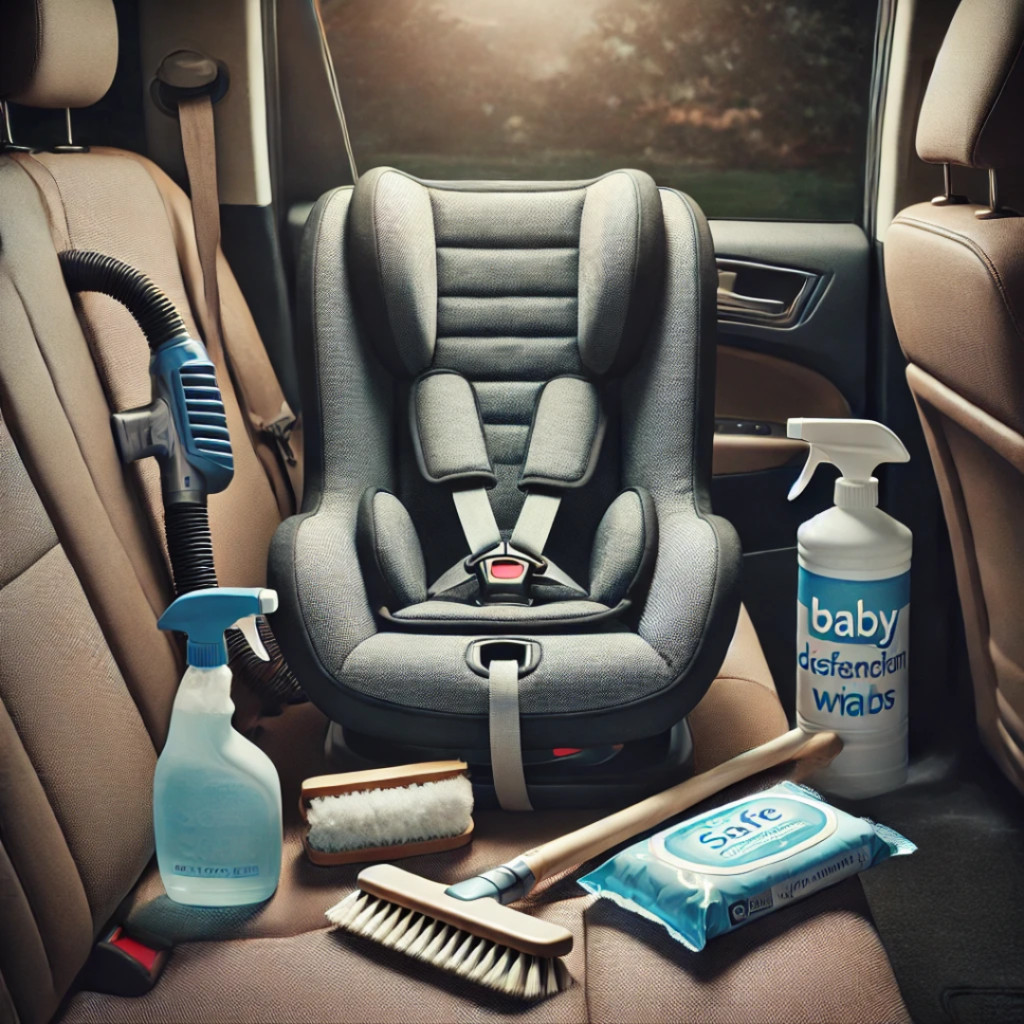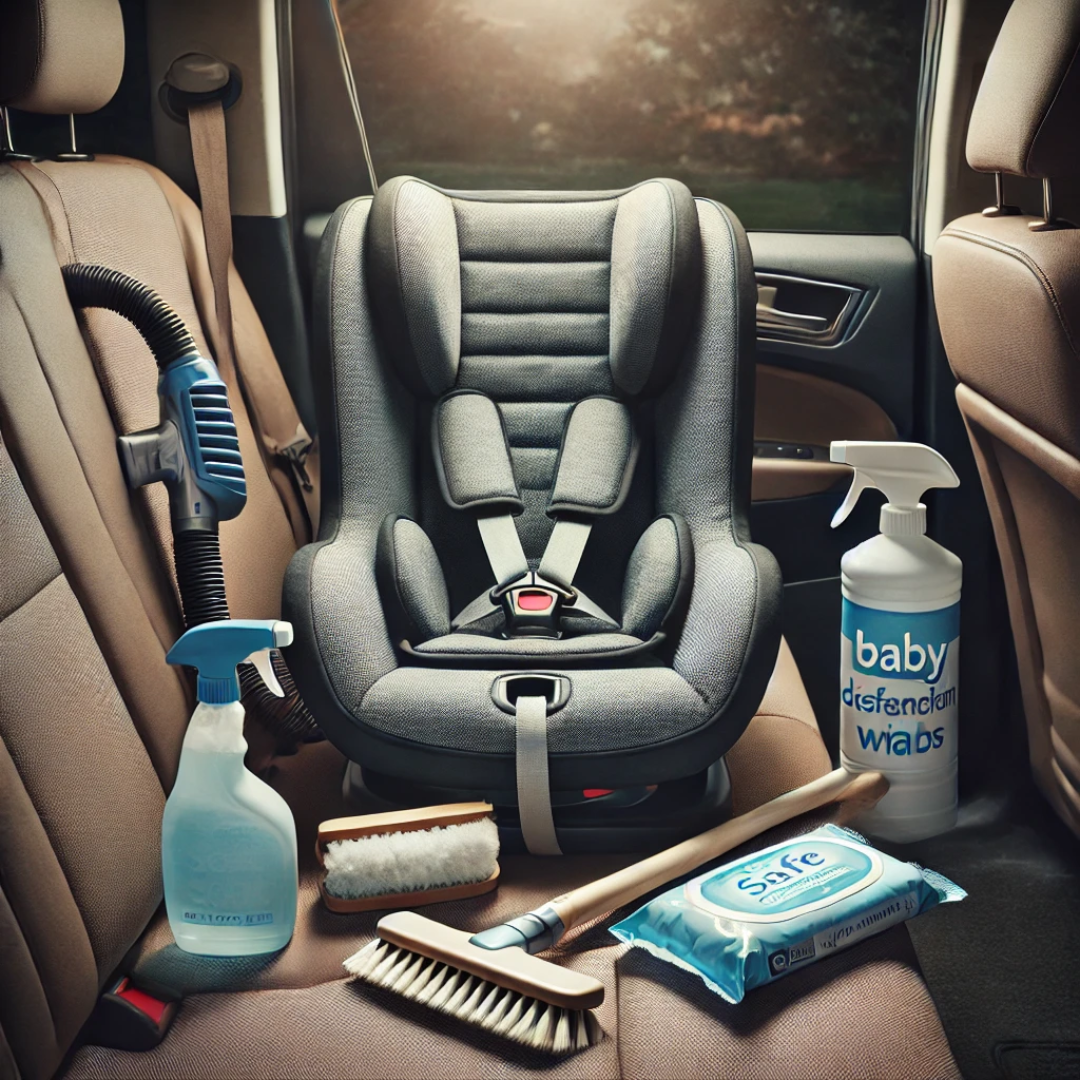Maintenance Tips for Long-lasting Car Seats
Proper maintenance of your child’s car seat is essential not only for its longevity but also to ensure it continues to protect your little one in every car ride. With a few regular care routines, you can keep your car seat in optimal condition and extend its lifespan. Here are some helpful maintenance tips for long-lasting car seats that every parent should follow.

Regular Cleaning
One of the most important maintenance tasks is keeping the car seat clean. Most modern car seats, such as those from Graco or Britax, come with removable and machine-washable covers. Always check the manufacturer’s cleaning instructions to avoid shrinking or damaging the fabric. Mild detergent is usually sufficient for washing the cover, but harsh chemicals should be avoided as they can degrade the fabric. Similarly, the harness should only be spot cleaned with a damp cloth and mild soap, as submerging it in water or using a washing machine can weaken the straps. Regular vacuuming of crumbs and debris from the seat helps prevent buildup in hard-to-reach areas, ensuring the seat functions properly.
Inspect for Damage
Over time, car seats can develop wear and tear, especially if used frequently. It’s essential to regularly inspect the car seat for any visible signs of damage. The plastic shell should be checked for cracks or stress marks, particularly after an accident, even a minor one. If any damage is spotted, the car seat should be replaced immediately to ensure safety. Similarly, check the harness system for fraying or loosening of the straps. Harnesses can degrade over time, and damaged straps should be replaced before they become a safety hazard.
Avoid Sun Exposure and Harsh Chemicals
Another way to maintain the integrity of your car seat is to protect it from prolonged exposure to the sun. Direct sunlight can fade the fabric and weaken plastic components, so it’s best to park in shaded areas or use window shades when possible. Additionally, when cleaning the car seat, avoid using strong chemicals like bleach or disinfectants that could degrade both the fabric and plastic. Always opt for gentle cleaning solutions to preserve the car seat’s materials.
Follow the Expiration Date
Many parents may not realize that car seats come with expiration dates, usually between 6-10 years after the date of manufacture. Over time, the plastic can degrade, making the car seat less effective in protecting your child during a crash. It’s crucial to check the expiration date, which is often found on a sticker or printed on the side or base of the car seat. If your car seat has expired, it’s time for a replacement, even if it appears to be in good condition.
Proper Storage
If you’re not using the car seat for an extended period, ensure it’s stored in a cool, dry place. Extreme temperatures, whether from heat or cold, can lead to the deterioration of the seat’s materials. Avoid storing car seats in areas like attics, basements, or garages, where moisture or extreme temperatures could cause damage over time.
Replacing After an Accident
Lastly, if your vehicle has been involved in an accident, it’s essential to replace the car seat. Some manufacturers, like Chicco or Britax, recommend replacing the seat after any accident, while others advise replacement only after moderate or severe crashes. Even if there is no visible damage, the seat’s safety features may have been compromised, reducing its effectiveness in protecting your child in the future. Always check with the car seat manufacturer for their specific guidelines on crash-related replacement.
By following these maintenance tips, you can ensure that your car seat remains in good condition and continues to provide the best protection for your child. Brands like Graco, Chicco, and Britax offer high-quality seats, but proper care is key to maximizing their safety features and longevity. Regular upkeep, cleaning, and inspections will help you get the most out of your car seat and, most importantly, keep your child safe on the road.
When cleaning a car seat, using the right tools and products is essential to avoid damaging the fabric, harness, or plastic components. Here are some recommended items to help keep your car seat clean and well-maintained:
1. Mild Detergent
- Use a mild, baby-safe detergent to clean the seat cover and any washable parts. Harsh chemicals should be avoided as they can irritate your child’s skin and degrade the fabric.
2. Microfiber Cloths
- Soft microfiber cloths are ideal for gently wiping down plastic parts, harnesses, and buckles without scratching surfaces.
3. Vacuum Cleaner (with Attachment)
- A vacuum with a crevice tool attachment is useful for sucking up crumbs, dirt, and debris trapped in the seat’s crevices. This prevents buildup and keeps the seat functioning properly.
4. Soft Brush
- A soft-bristled brush can help loosen stubborn dirt on the seat cover before cleaning. It’s gentle enough not to damage the fabric but effective at lifting dust and debris.
5. Mild Soap and Water
- For spot cleaning, use mild soap mixed with warm water and a soft cloth to clean harness straps, buckles, and plastic components. Ensure you don’t soak the straps, as this can weaken their integrity.
6. Disinfecting Wipes (Baby-Safe)
- Baby-safe disinfecting wipes can be used to quickly clean the plastic parts and buckles without needing a deep wash. Just ensure they don’t contain harsh chemicals.
7. Upholstery Cleaner (Car Seat-Safe)
- If there are stubborn stains, use a car seat-safe upholstery cleaner. Ensure the product is free from bleach and strong chemicals that could compromise the safety materials.
8. Lint Roller
- For quick clean-ups of hair, lint, or small debris on the fabric, a lint roller is an effective tool to use.
These items help ensure that the car seat remains clean, hygienic, and safe for your child. Always consult your car seat manufacturer’s care instructions for any brand-specific recommendations before using cleaning products.



